MARIANI’S
Virtual Gourmet
September 3,
2017
NEWSLETTER

Gil
Elvgren (1967)
HAVE A GREAT
LABOR DAY WEEKEND!
IN THIS ISSUE
DINING VERY WELL IN
WALT DISNEY WORLD RESORT
Part Two
by John Mariani
NEW YORK CORNER
PORTER HOUSE BAR & GRILL
By John Mariani
NOTES FROM THE WINE CELLAR
WHAT I'M DRINKING NOW
By John Mariani
❖❖❖
DINING VERY WELL IN
WALT DISNEY WORLD RESORT
Part Two
by John Mariani
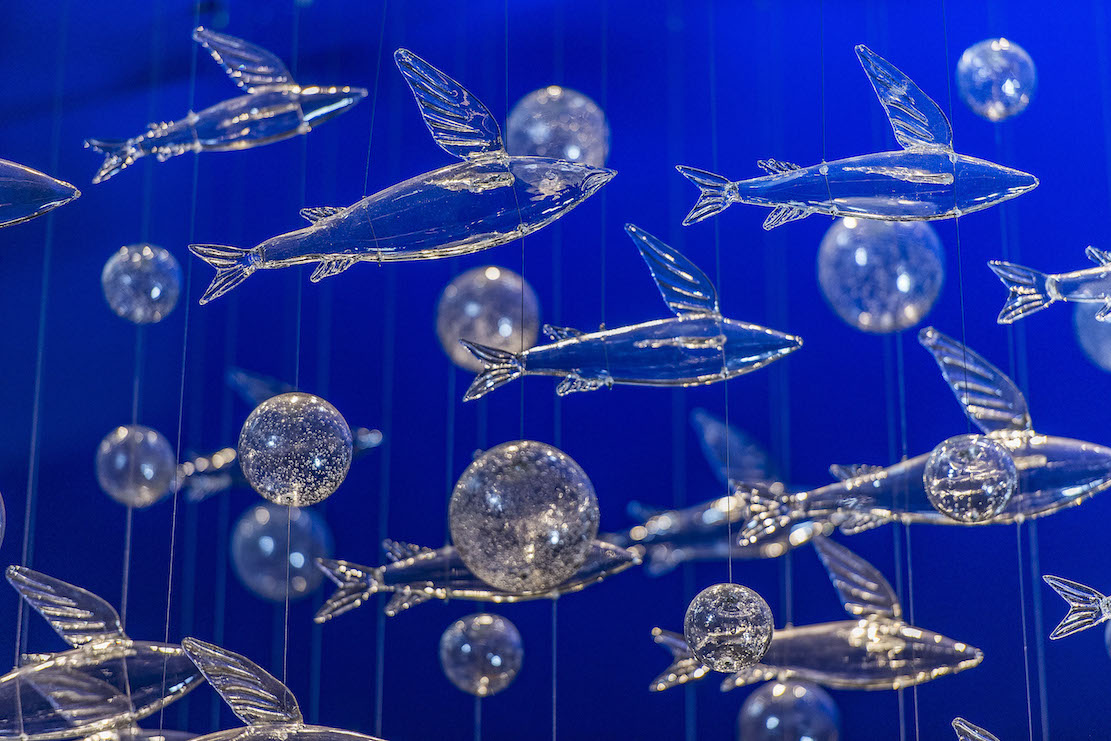
I suspect many visitors to Disneyland Resort or Walt Disney World Resort—either as children or with their own children—learned to eat what would have been exotic there, and that also goes for guests in the branches in France, Hong Kong, Shanghai and Tokyo.
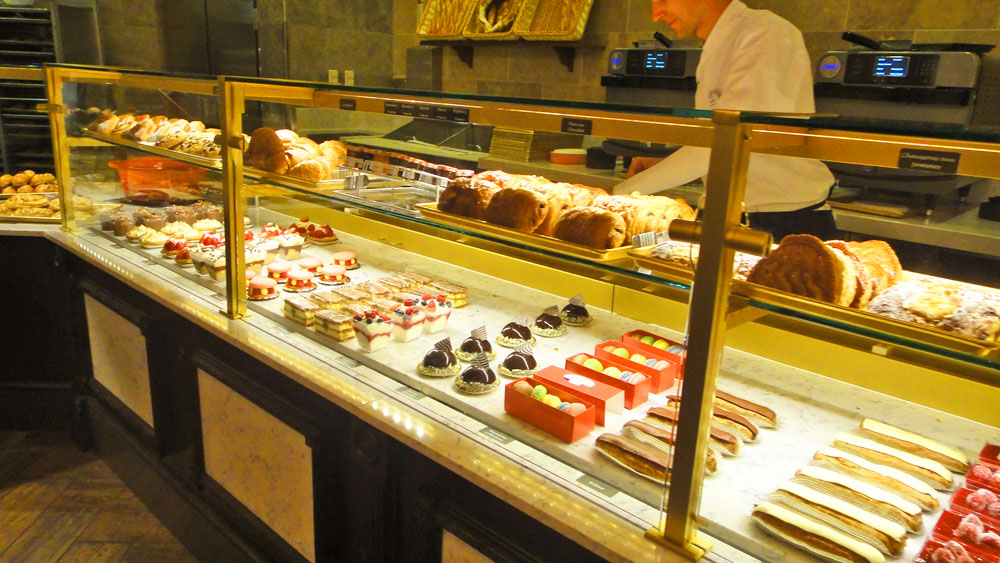 Disney has long been
canny about surveying guests’ likes and dislikes
about its food service—more healthy options than
burgers and fries, more seafood, more vegetables,
and, for the upscale market, restaurants
comparable to those found in major U.S. cities. As
mentioned last week, better international-style
food was introduced when Epcot Centre (now just
Epcot) and the Disney-MGM Studios (now Disney’s
Hollywood Studios) opened.
Disney has long been
canny about surveying guests’ likes and dislikes
about its food service—more healthy options than
burgers and fries, more seafood, more vegetables,
and, for the upscale market, restaurants
comparable to those found in major U.S. cities. As
mentioned last week, better international-style
food was introduced when Epcot Centre (now just
Epcot) and the Disney-MGM Studios (now Disney’s
Hollywood Studios) opened.
Every Disney food service
outlet is constantly monitored, updated, renovated
and sometimes removed for the installation of a
newer concept.
Every detail goes through a
state-of-the-art Flavor Lab, where concepts years
away from opening are developed by “Imagineers.” The
newly conceived Les
Halles Boulangerie-Patisserie (left) at
the World Showcase must walk a line between Gallic
authenticity and American appetites; hence,
larger-than-usual croissants. Vivoli Il Gelato
at 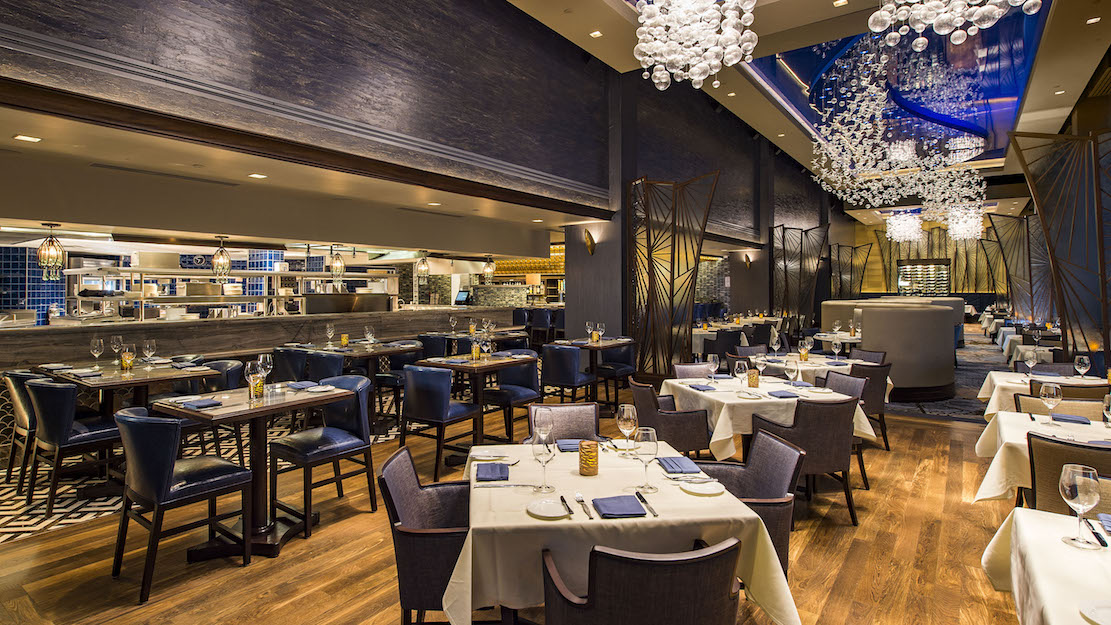 Disney
Springs is an offshoot of the famous original in
Florence, Italy.
Disney
Springs is an offshoot of the famous original in
Florence, Italy.
One of the most significant
renovations at the Resorts has been the fine
dining room called Flying Fish at Disney's Board Walk (right). The
restaurant, which has been around for since 1996,
is enormously popular—though not cheap—and there
are some wonderful new decorous touches:
chandeliers that look like bubbles floating to the
surface of the sea and clear glass flying fish on
nearly invisible strings. The place is darker than
it used to be, perhaps aiming at a more
sophisticated look, but dark it is. I’m not
sure why some tables have linens and others do
not, but settings are of very fine quality and the
wine list is excellent, as has become the rule at
the resort’s upscale restaurants. There is also an
old-style Victorian saloon attached to the main
dining room.
At
this point the ratio of seafood to meat dishes at
Flying Fish is about equal, but on my latest visit
I stayed closer to the sea than the land,
beginning with wonderfully plump, crispy shell
crab with a saffron aïoli, pickled red onion, herb
puree and pomegranate ($21). I did
allow myself to indulge in excellent Kurobuta pork
belly with a shank croquette, 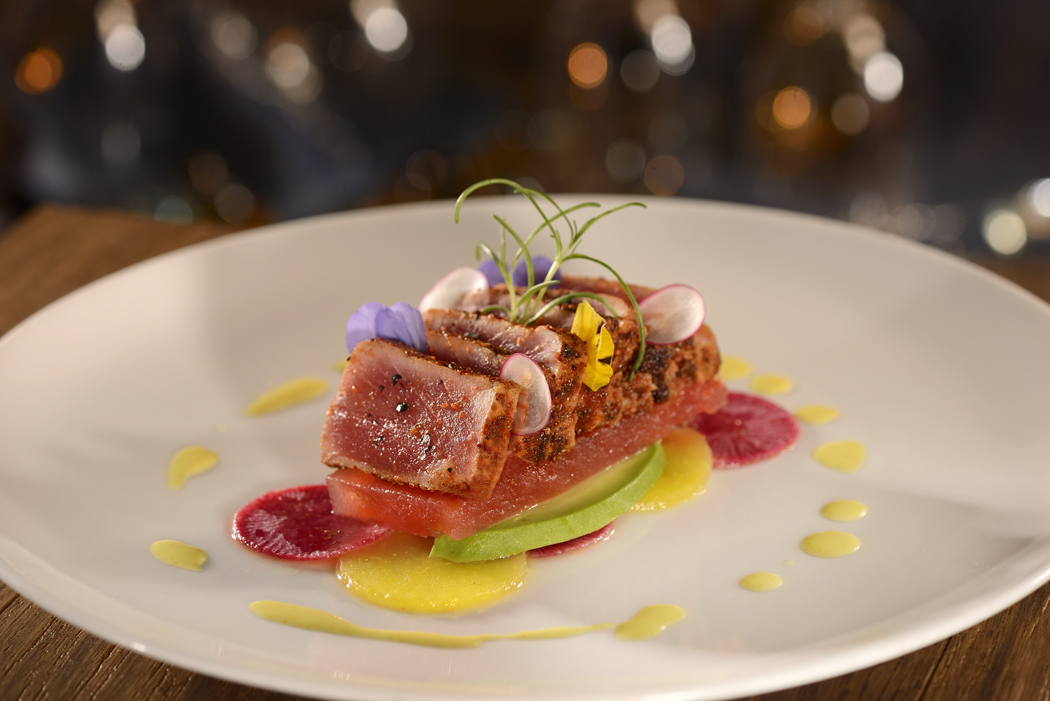 apple slaw,
Bing cherry gastrique
and shirred quail egg ($13).
apple slaw,
Bing cherry gastrique
and shirred quail egg ($13).
Among the main courses I most
liked was a lavish dish of lobster nestled in
squid ink pasta with golden tomato sauce, baby
artichokes, and fennel pollen that was as
delicious as it was pretty. It does cost $64 but
is easy to share for two people. Spanish
octopus comes hot from a wood-fired grill, sharing
the plate with Chilean sea bass and Key West pink
shrimp graced with Spanish bomba
rice (usually used for paella), sweet peppers and
housemade chorizo ($49).
I didn’t order the salmon flown
in all the way from New Zealand ($39), when better
Pacific Northwest salmon might have been
purchased. But
I don’t often see Hawaiian abalone on a menu, so I
went for it, accompanied by Skull Island prawns, a
Gulf shrimp salad, charred potatoes, corn salad
and Syrian (really?) pumpkinseed oil ($79).
There are niceties like chilled
silverware with dessert , and wine suggestions are
given with every dish.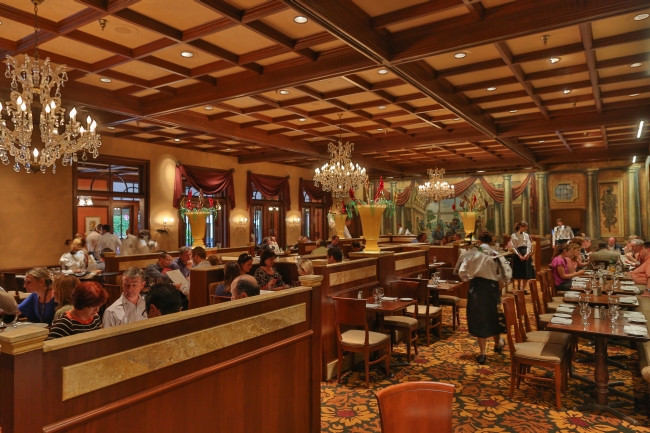
The food prices
here are among the highest at Walt Disney World,
but the portions of several dishes are exceedingly
generous and can feed two people. It is
not a restaurant designed with kids in mind,
though they are not made to feel unwelcome.
At
Epcot’s Italian Pavilion, there is now a trio of
restaurants—the fine dining Tutto Italia
Ristorante (right)
and Tutto Gusto Wine Cellar, and in the same
piazza (a copy of San Marco in Venice) a casual
family spot named Via Napoli Ristorante e Pizzeria
(below)—the
latter packed from the moment it opens each day
until the park closes.
 Previously the space had been a sadly mediocre
Italian restaurant, but now Tutto Italia is as
authentic an Italian experience as you’ll get
anywhere this side of Rome, in large part owing to
veteran manager Benito Sevarin overseeing every
detail from preparation of the food to the service
staff.
Previously the space had been a sadly mediocre
Italian restaurant, but now Tutto Italia is as
authentic an Italian experience as you’ll get
anywhere this side of Rome, in large part owing to
veteran manager Benito Sevarin overseeing every
detail from preparation of the food to the service
staff.
You may certainly linger in
this lavish dining room if you wish, although you
can be in and out at lunch in under an hour. I do
wish they had even a minimal dress code in such a
charming room, but such things are tough to
enforce at Disney. (Only at the posh Victoria
& Albert's are men instructed to wear jackets,
but no tie.)
Just about everything I tasted
at Tutto Italia Ristorante showed real care in
both selection of ingredients and service, from
the first-rate Prosciutto di Parma and ultra-crisp
schiacciata
crackers ($20) to the bright beef carpaccio with porcini
essence ($18).
Malfadine
pasta was cooked impeccably, with a robust lamb ragù and
feta cheese, 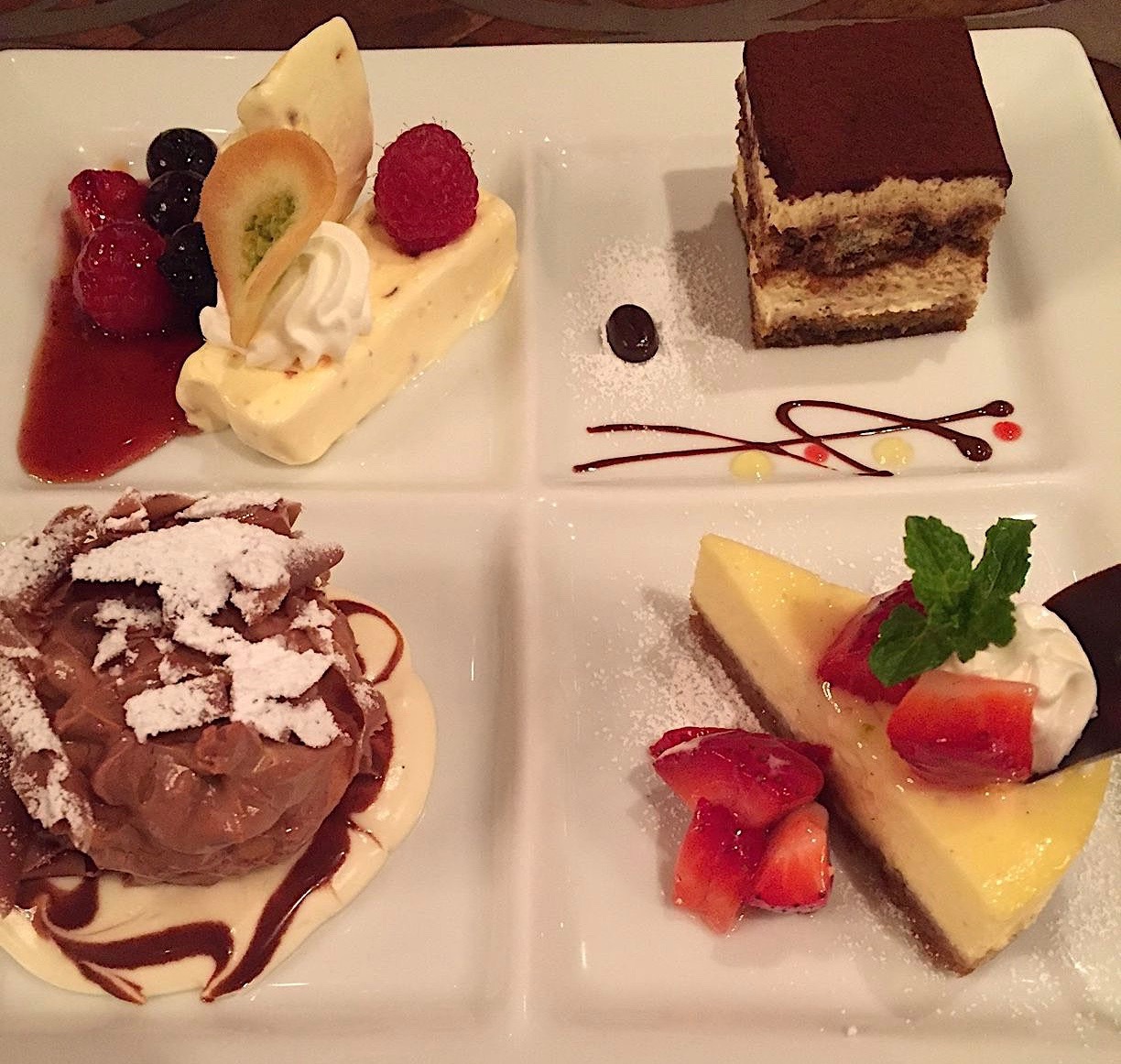 while capunti
pasta (all housemade) was abundant with mussels,
cranberry beans and olive oil. Since
the kitchen must serve spaghetti and meatballs,
they might as well be the best around, made with
veal in a deeply flavorful tomato sauce.
while capunti
pasta (all housemade) was abundant with mussels,
cranberry beans and olive oil. Since
the kitchen must serve spaghetti and meatballs,
they might as well be the best around, made with
veal in a deeply flavorful tomato sauce.
I’m a stickler about lasagne alla
Bolognese, so I was very happy the version
here had all the right elements, including a lush
besciamella and more vegetables than tomato ($27).
So, too, fettuccine with arugula basil pesto
was true to its Ligurian roots ($27) and the
risotto of squash and shrimp was light and lovely
($31). Tortellini
alla panna in butter and cream ($27)
accompanied a scallopine of chicken cooked in
Marsala wine ($26).
I
had a fine sampling of desserts (right) that
included mocha tiramisù
($12), a Gianduja chocolate profiterole ($14), a torrone
semifreddo ($13) and a plate of hot cookies.
Citricos at Disney's Grand
Floridian Resort & Spa has long been one of my
favorites, a stylish, very colorful
Mediterranean-style dining room with vine-like
wrought-iron gates and railings echoed in the
carpets, mosaic tiles, a swank bar, soft
chandeliers and white tablecloths, with a grand
view of the lagoon.
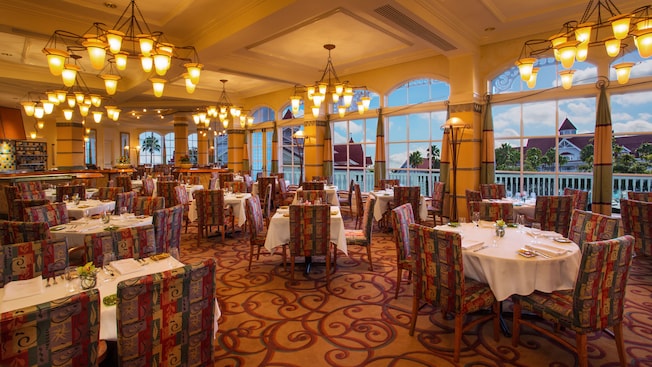 Chef Dominic Filoni, whose food has impressed me
since I first had it in Philadelphia more than a
decade ago, now has all the resources possible to
produce a superb cuisine, as you will taste in an
amuse bouche
of green-gold zucchini blossom stuffed with
housemade ricotta with a lemony tomato-saffron
compote. Tuna carpaccio (below) comes in a Niçoise style
with French mustard, green peas, red and yellow
peppers, and to gild the palate, tuna confit with
crostini
toast and egg.
Filoni is a classicist,
Chef Dominic Filoni, whose food has impressed me
since I first had it in Philadelphia more than a
decade ago, now has all the resources possible to
produce a superb cuisine, as you will taste in an
amuse bouche
of green-gold zucchini blossom stuffed with
housemade ricotta with a lemony tomato-saffron
compote. Tuna carpaccio (below) comes in a Niçoise style
with French mustard, green peas, red and yellow
peppers, and to gild the palate, tuna confit with
crostini
toast and egg.
Filoni is a classicist,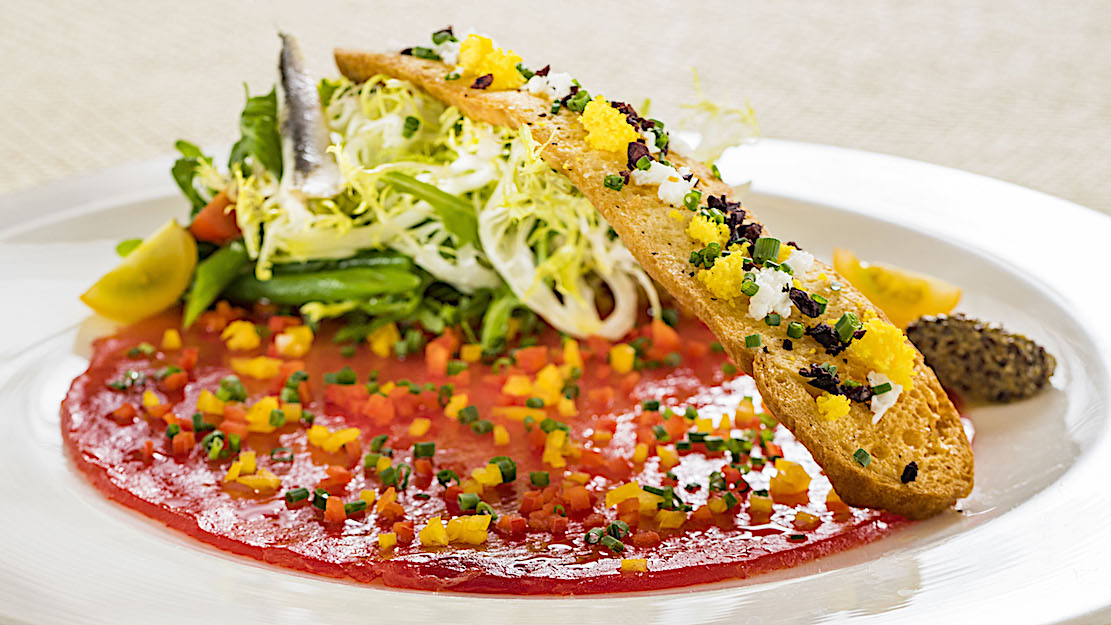 so he
knows very well how to make a traditional country
pâté with onion confit, cornichons, mustard seeds
and focaccia bread.
so he
knows very well how to make a traditional country
pâté with onion confit, cornichons, mustard seeds
and focaccia bread.
Among the entrees I enjoyed
were tortelloni
pumped with short ribs meat in a mushroom ragôut
and red wine sauce, and well-wrought risotto with
scallops, fava beans, English peas and asparagus. Braised
short ribs turned up again, this time on their own
and sided with polenta, wild mushrooms, spinach
and a tangy gremolata.
As
everywhere in upscale Disney, desserts are a
dramatic tour de force, like the warm chocolate
and banana torte with vanilla ice cream and a
chocolate crown fit for any Disney princess. Tropical
fruit crème brûlée comes with mango and berries,
while cheesecake is encrusted with almond and
served with a cherry sauce.
❖❖❖
PORTER
HOUSE BAR & GRILL
By John Mariani
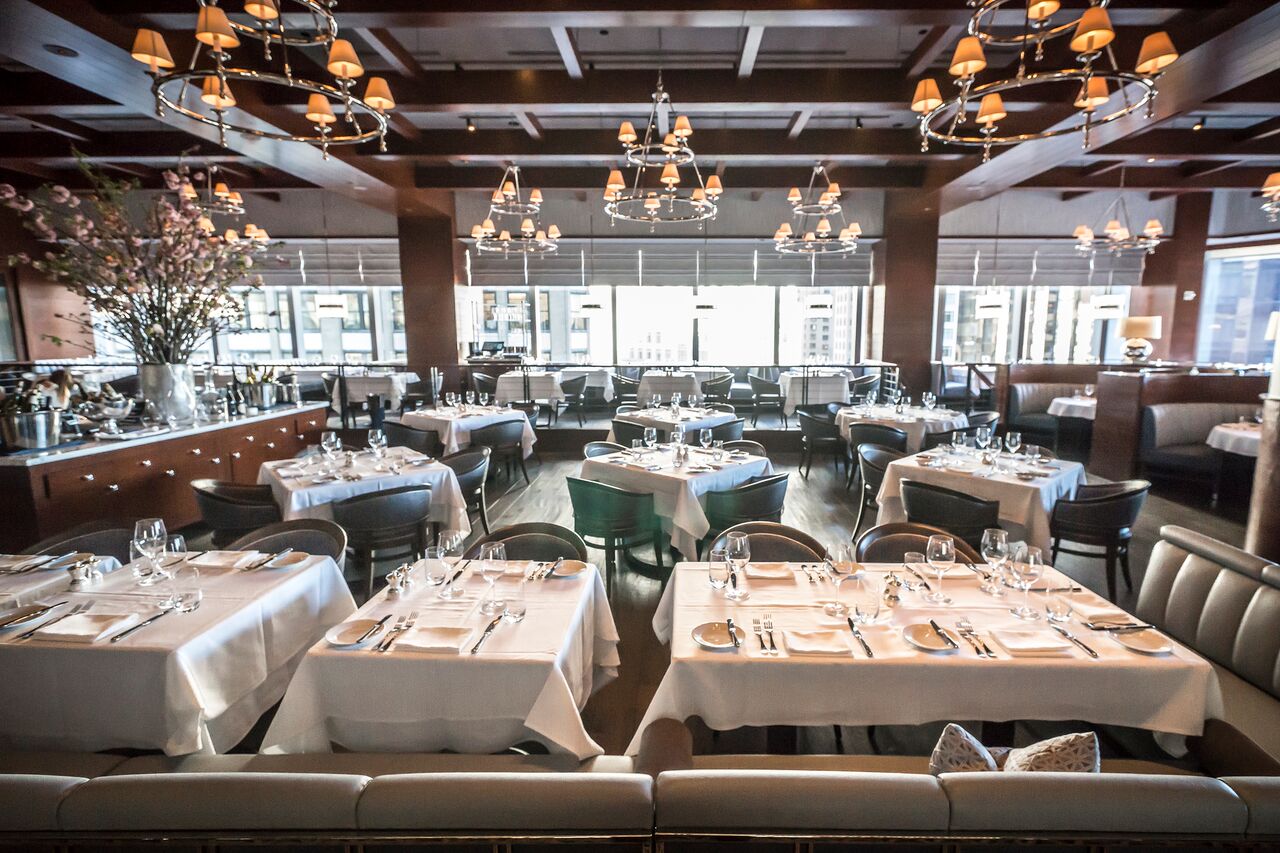
By
a wide margin, when out-of-town friends ask me
where to dine in NYC—which is like asking what
animals one should see in Kenya—they mean either
an Italian restaurant or a steakhouse. (Oddly
enough, the latter grew from Italian-American
roots back in the 1930s, when midtown saw the
emergence of steakhouses whose owners always
included Italian food on the menu.)
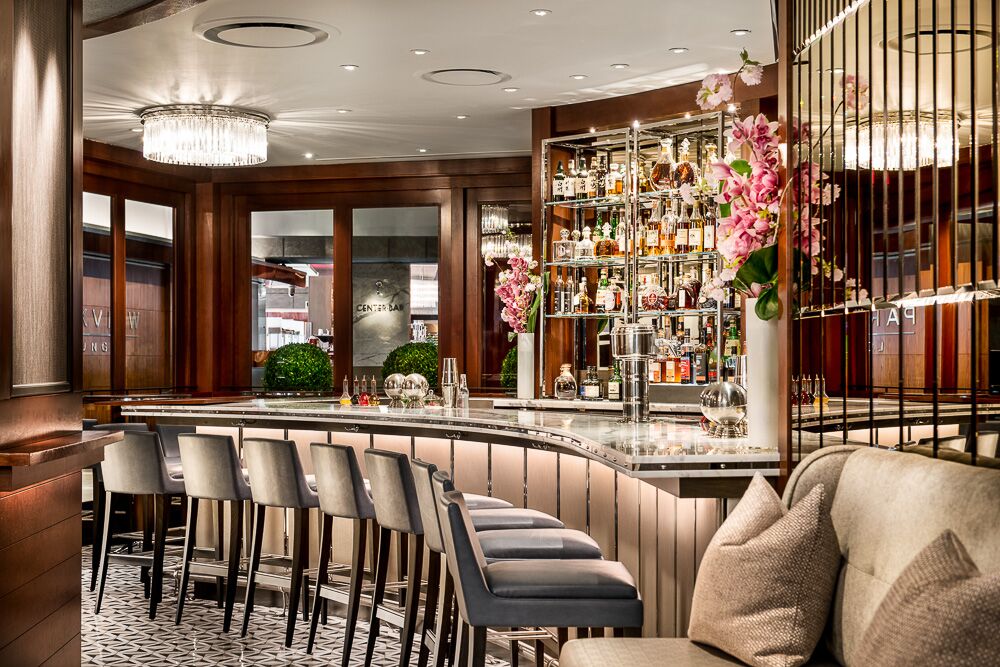 It would
be easy enough to bring up iconic places like
Peter Luger’s in Brooklyn, but it’s almost
impossible to get a table at a decent hour there
and, aside from the quality of the beef, there’s
nothing else about the place to recommend it. There’s
Spark’s, but the management has an attitude
problem towards newcomers, as can be the case at
the original Smith & Wollensky. And I’m
certainly not going to recommend a chain
steakhouse out of New Orleans or Dallas, however
good they might be, to a visitor to NYC.
It would
be easy enough to bring up iconic places like
Peter Luger’s in Brooklyn, but it’s almost
impossible to get a table at a decent hour there
and, aside from the quality of the beef, there’s
nothing else about the place to recommend it. There’s
Spark’s, but the management has an attitude
problem towards newcomers, as can be the case at
the original Smith & Wollensky. And I’m
certainly not going to recommend a chain
steakhouse out of New Orleans or Dallas, however
good they might be, to a visitor to NYC.
Thus, for a whole lot more
reasons, I recommend Porter House Bar & Grill,
which overall has the same high quality of food as
the best of them, cordial hospitality overseen by
g-m Alex Kurland, wine and cocktail service under
Brad Nugent, and an ambiance that is unique, even
in Manhattan.
PHBG is set above Columbus Circle and
Central Park, with a view all the way across the
skyscrapers on Central Park South and those that
line Fifth Avenue. 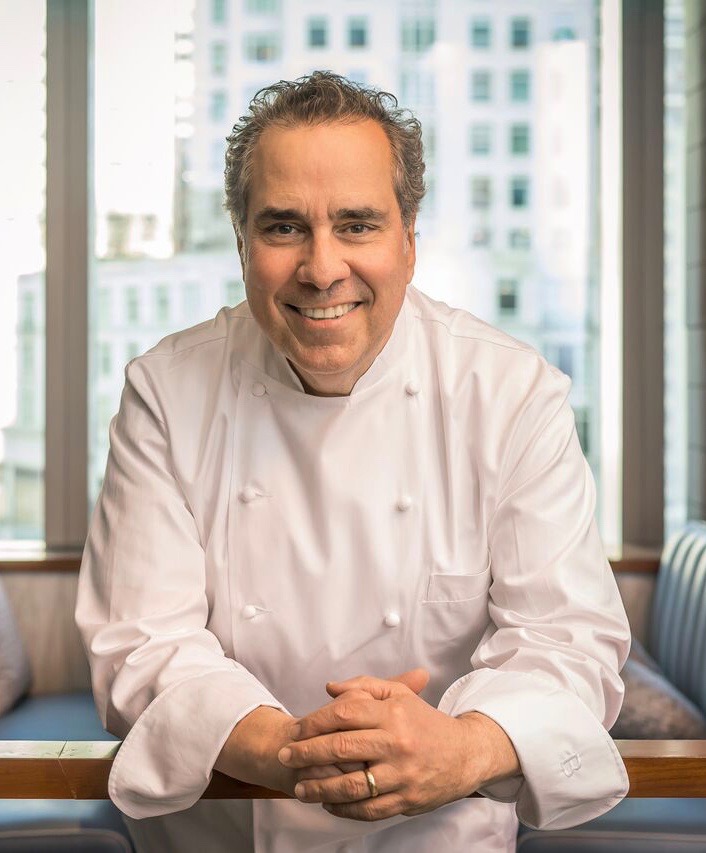 Four
flights
up in the vast Time-Warner Center (which also
houses Per Se, A Voce, Masa, Bouchon, and
Landmarc), Porter House is celebrating ten years
in business with a dining room packed for lunch
and dinner daily.
Four
flights
up in the vast Time-Warner Center (which also
houses Per Se, A Voce, Masa, Bouchon, and
Landmarc), Porter House is celebrating ten years
in business with a dining room packed for lunch
and dinner daily.
After all those years, the
owners, who include chef-and-managing partner
Michael Lomonaco (right), decided the place needed
a facelift, without destroying all that was quite
beautiful about the place. A year
ago Jeffrey Beers International, its original
designers, re-did the lounge in a somewhat more
sophisticated style, with a floor-to-ceiling glass
wine cabinet and leather panel. The broad and deep
main dining room was done up with polished nickel
finishes, bronze tinted mirrors, and pearlescent
wall coverings with dark blue accents throughout.
They also tacked on "Bar & Grill" to the name.
Photo by Noak Fecks
The chilled seafood platter ($97 to $125) teems with lobster, oysters, clams, shrimp and King crab, and the jumbo lump crab cake with a horseradish-mustard sauce ($25) is as good as any in a competitive market. If you really can’t do without facsimile caviar, there is American ossetra with blini and accompaniments ($125).
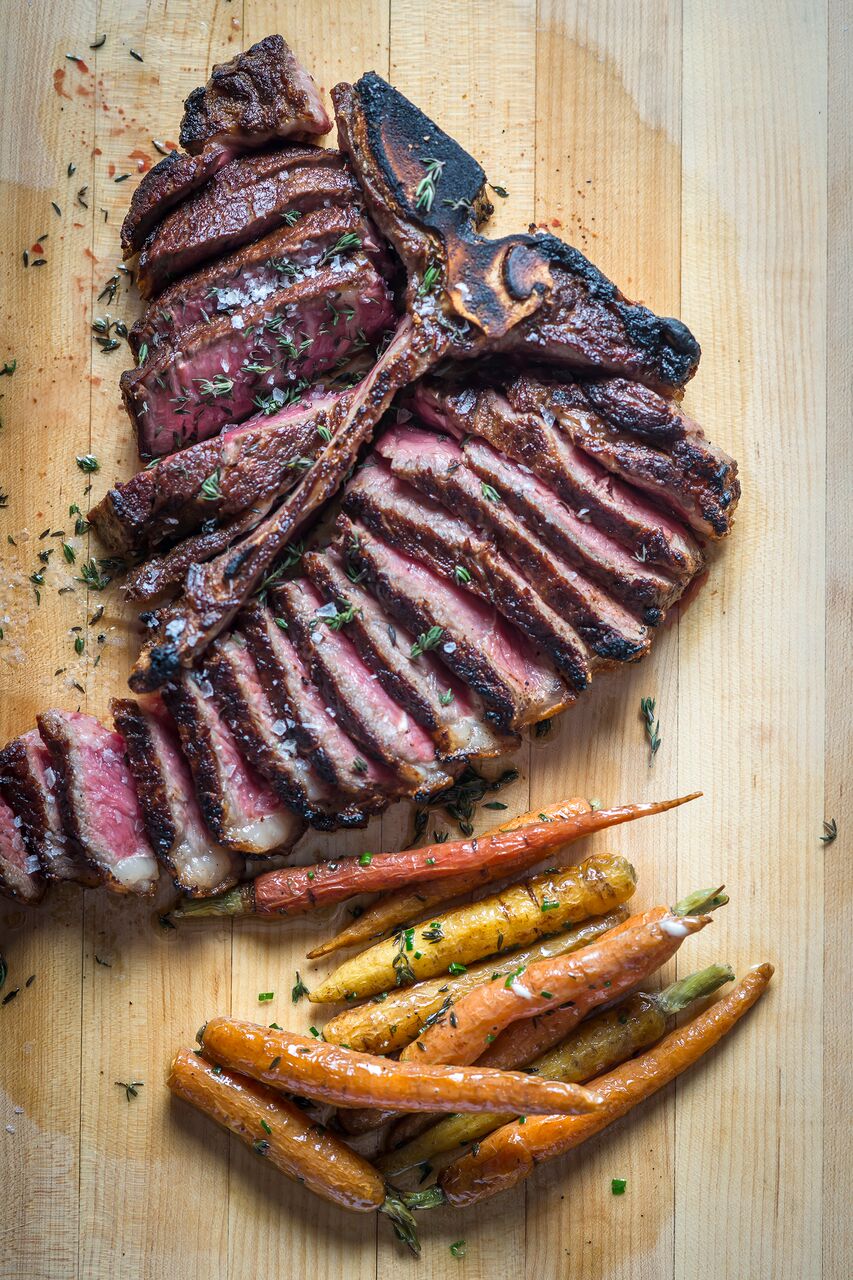 There are
three pastas listed, and I’m very happy I ordered
the excellent spaghetti alla ghitarra ($24), whose
spicy tomato and basil coated every strand of the
perfectly cooked pasta.
There are
three pastas listed, and I’m very happy I ordered
the excellent spaghetti alla ghitarra ($24), whose
spicy tomato and basil coated every strand of the
perfectly cooked pasta.With a name like Porter House, the stakes (no pun intended) are high, especially since Peter Luger built its rep on that cut of strip and filet mignon. The meat is USDA Prime, of course, and its true flavor shows in the impeccable searing and maintaining an interior medium-rare warmth in the porterhouse for two ($124). The same goes for the on-the-bone strip ($63) and the delicious veal chop ($59), which comes with sage-glazed gnocchi, baby onions and thyme. The lamb chops are from Colorado ($57), the porterhouse pork chop from Niman Ranch ($43).
PHBG also offers Japanese wagyu (12 ounces $185) and American wagyu-style ($96), but I, among many beef lovers, have no appetite for such absurdities.
On the side go for either the nonpareil onion rings or the creamed spinach enhanced with bacon.
PHBG’s wine list is very well chosen. It’s got its
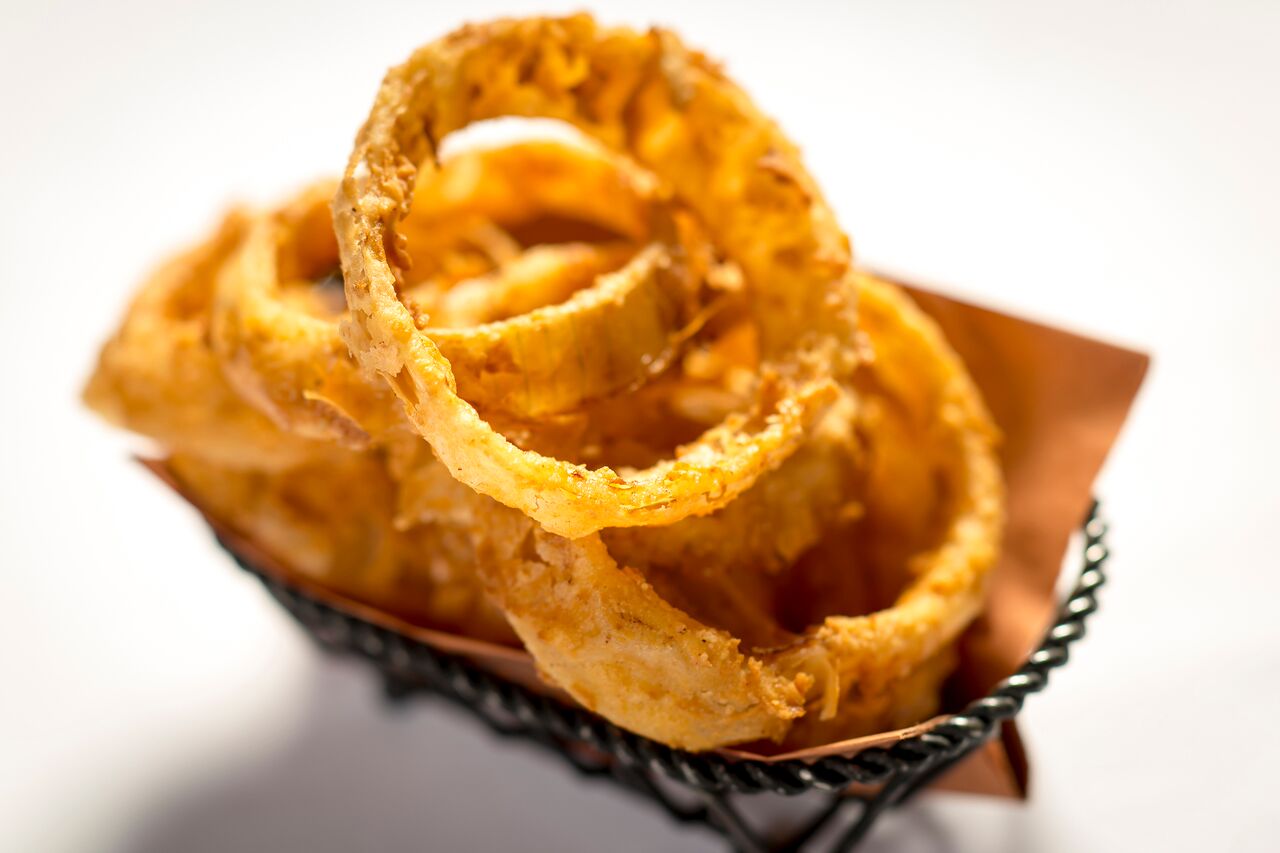 trophy
bottlings, but doesn’t go in for ten vintages of
hyped California cult wines (although someone
sometime bought a helluva lot of Williams Selyem).
There are plenty of wines by the glass ($12-$95),
and four pages of half-bottles. Mark-ups
overall are steakhouse high, but you can find some
good buys, like Jean Marc Brocard Chablis Premier
Cru 2013 for $85.
trophy
bottlings, but doesn’t go in for ten vintages of
hyped California cult wines (although someone
sometime bought a helluva lot of Williams Selyem).
There are plenty of wines by the glass ($12-$95),
and four pages of half-bottles. Mark-ups
overall are steakhouse high, but you can find some
good buys, like Jean Marc Brocard Chablis Premier
Cru 2013 for $85.It’s true, aching temptation to decide among Porter House’s warm cookie plate ($12), an ice cream fudge sundae with maple walnuts ($12) or seven-layer South Carolina coconut cake ($14), all meant to be shared.
If you live in or nearby NYC, PHBG is a terrific choice to take someone who is not, and for those coming in on their own, you won’t find a better New York state of mind than dining here.
Porter House Bar & Grill is open daily for lunch and dinner,
PORTER HOUSE BAR & GRILL, 10 Columbus Circle, 212-823-9500.
❖❖❖
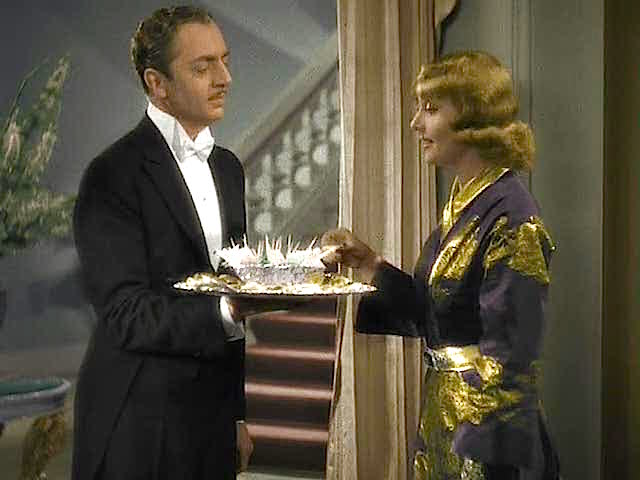 WHAT I'M
DRINKING NOW
WHAT I'M
DRINKING NOWBy John Mariani
LE
VOLTE DELL’ORNELLAIA 2013 ($28)—Ornellaia,
owned by Frescobaldi, is one of the most
illustrious names in Tuscany, and Le Volte is the
estate’s far more affordable Tuscan I.G.T. as a
blend of 50% Sangiovese, 40% Merlot and 10%
Cabernet Sauvignon.
Winemaker Axel Heinz is known for his
wines’ equilibrium with never any sharp notes,
even while young, so Le Volte is easy to drink
right off the shelf, and, at 13.5% alcohol, the
2013 doesn’t really need much more age.
CHÂTEAU FAIZEAU
MONTAGNE-SAINT-ÉMILION 2012 ($22)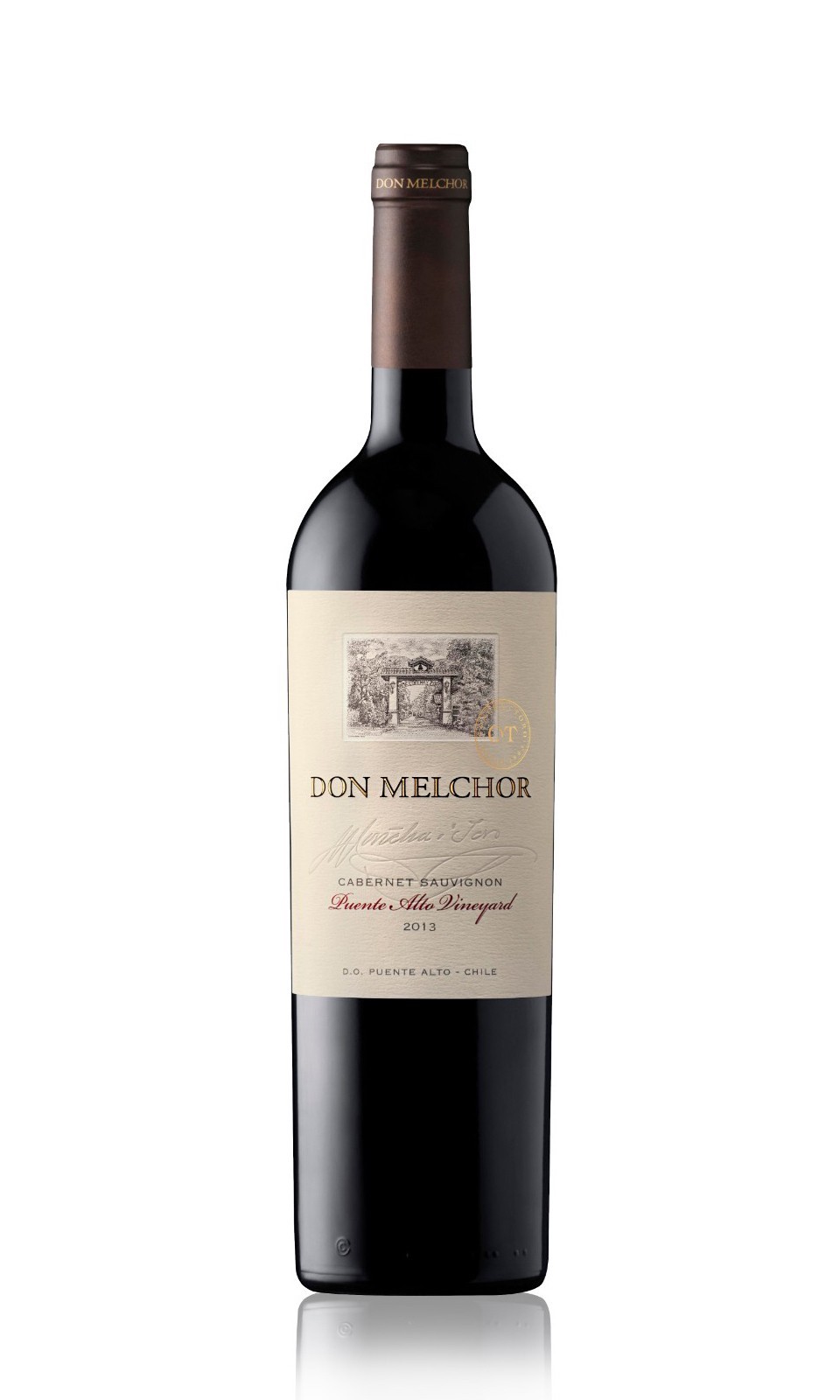 —In the
tradition of Saint-Émilion, this is predominantly
Merlot, with just 6% Cabernet Franc for a little
more grip. When
the label says “vieilles
vignes” (old vines), it means it: The
estate’s locale, spread over 30 acres, dates to an
abbey of the 12th century, rich in limestone soil,
which gives it a lot of structure. The wine has
loosened up and the Merlot is showing its
creaminess, but you can keep this around for the
next five years.
—In the
tradition of Saint-Émilion, this is predominantly
Merlot, with just 6% Cabernet Franc for a little
more grip. When
the label says “vieilles
vignes” (old vines), it means it: The
estate’s locale, spread over 30 acres, dates to an
abbey of the 12th century, rich in limestone soil,
which gives it a lot of structure. The wine has
loosened up and the Merlot is showing its
creaminess, but you can keep this around for the
next five years.
DON MELCHOR PUENTE
ALTO VINEYARD CABERNET SAUVIGNON 2013 ($75-$95)—Always
intended as a showpiece wine by Chile’s Concha y
Toro, Don Melchor has the power of 91% Cabernet
Sauvignon and 9% Cabernet Franc, whose grapes have
enjoyed a cooler hilly climate than they would on
a valley floor. Fifteen months in oak tame it
down, too. Award-winning
winemaker Enrique Tirado has earned his reputation
as a master beyond Chile as a world-class player
without imitating Bordeaux or California.
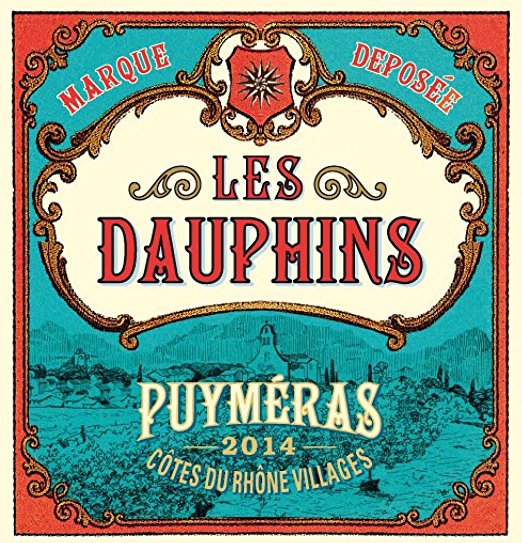 LES DAUPHINS PUYMÉRAS 2014 ($19)—For
its
very pretty bottle alone and price, this would
make a nice gift wine, but it is also a fine
example of a traditional big southern Rhȏne Valley
red, made with 70% Grenache, 20% Syrah and 10%
Carignane—but no Mourvèdre—wholly unfined and
matured entirely in concrete tanks, so the texture
is bonus to the richness of the fruit, and the
13.5% alcohol keeps it from becoming a cloying
Rhône.
LES DAUPHINS PUYMÉRAS 2014 ($19)—For
its
very pretty bottle alone and price, this would
make a nice gift wine, but it is also a fine
example of a traditional big southern Rhȏne Valley
red, made with 70% Grenache, 20% Syrah and 10%
Carignane—but no Mourvèdre—wholly unfined and
matured entirely in concrete tanks, so the texture
is bonus to the richness of the fruit, and the
13.5% alcohol keeps it from becoming a cloying
Rhône.
JUAN GIL JUMILLA 2014 ($12)—Made
from the Monastrell
grape grown in chalky soils of the
Jumilla region of the Lavante, it has the
smokiness associated with the varietal, and the
Crianza aging
of one year in French oak and one in bottle
smooths everything out to make it a very versatile
wine with a wide range of meat dishes. Remarkable
price, too.
LYNDENHURST CABERNET
SAUVIGNON SPOTTSWOODE ESTATE VINEYARD WINERY
2013
($85)—At a reasonable 13.5% alcohol, this
California Cabernet from a first-rate vintage is
made from grapes on the Spottswoode Estate
Vineyard in St. Helena as well as from grapes
bought from other select growers. It’s got good
spice, smells a bit of cedar and pine, and is made
from 92% Cabernet Sauvignon, 4% Malbec, 2%
Cabernet Franc, and 2% Petit Verdot, all of which
add subtly to the complexity of the finished wine. Only a
thick slab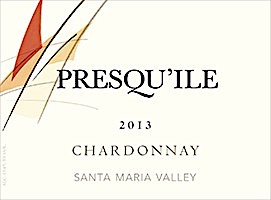 of steak
will do for a big red wine of this stature.
of steak
will do for a big red wine of this stature.
PRESQ-UILLE CHARDONNAY SANTA MARIA
VALLEY 2015 ($35)—The name means “almost
an island,” a spot on the Gulf Coast favored by
the Murphy Family, which owns this vineyard in
Santa Maria Valley, California. (That favored spot
was wiped out by Hurricane Katrina.) The
generational owners aim for complexity in cool
climate wines, and they make their Chardonnay in
the Old World tradition of using native yeast
fermentation, native malolactic conversion, sur lies aging
and
13.5% alcohol, all of which promote the fruit
while keeping an acidic brightness on the palate. The
price is about what I think Chardonnays of this
caliber should cost.
MARCO
FELLUGA
RUSSIZ SUPERIORE COLLIO CABERNET FRANC ($28)—The
wines of Friuli certainly have respect, though
perhaps not so much for the reds, but Marco
Felluga—the fourth of five generations of the
family involved—is among the pioneers and someone
who knows that making a mid-bodied red of real
refinement is a better bet than trying to make a
blockbuster.
The region is known more for its Cabernet
Franc than Cabernet Sauvignon, and this is a fine
example, with a delightful peppery flavor and
vivid fruit with only 13% alcohol. With
poultry, game or lamb, this makes a magnificent
match.
ALFRED GRATIEN BRUT
ROSÉ CHAMPAGNE non-vintage ($37-$40)—Alfred
Gratien’s website goes a bit overboard in its
description of this lovely Champagne—“The initial aroma is
fruity (strawberries and red currants) and
floral (peonies). Wheat, biscuit and crème
fraiche notes are detectable, as are hints of
more roasted flavours”—but it does have many
notes and a charming bouquet in a pretty salmon
pink color.
The wine is made in the Grand Crus and
Premier Crus districts in the heart of the Cȏte
des Blancs region of Épernay, 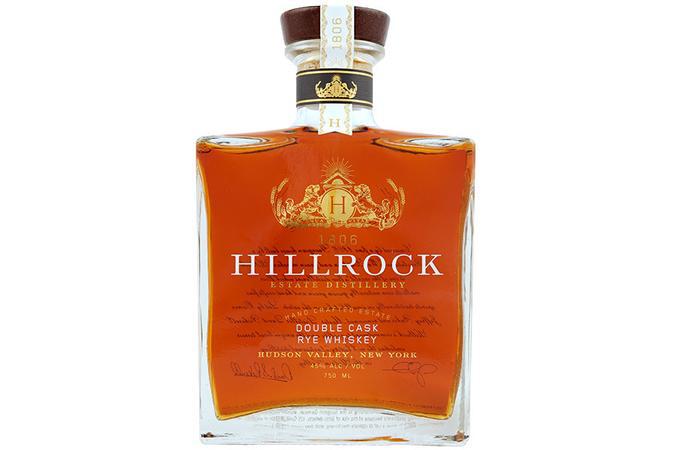 with each cru
vinified separately. The house is known for the
voluptuous quality of its Champagnes, and that
certainly shines through in the fruit of this
rosé.
with each cru
vinified separately. The house is known for the
voluptuous quality of its Champagnes, and that
certainly shines through in the fruit of this
rosé.
HILLROCK
ESTATE
DISTILLERY DOUBLE CASK RYE ($80)—Master
spirits blender Dave Pickerell left Maker’s Mark
Bourbon in Kentucky to come to the Hudson Valley
in 2010 to make rye whisky from small batches of
organically grown grain distilled in a 250-gallon
copper pot still built to his exact
specifications.
As much care was put into the choice of
used Port barrels to be charred and aged, so that
there is just enough caramel flavor and dark
winter fruits to make it distinctive. Not as
sweet as bourbon nor as intense as Scotch, it is
bottled at 90 proof.
❖❖❖
 GREAT IDEAS
OF
GREAT IDEAS
OF
WESTERN
CIVILIZATION
In an effort to calm their after
midnight customers who may be a tad inebriated,
McDonald's is experimenting with playing Mozart's
“Magic Flute” and “Ode to Joy” to set a more
civilized mood in certain stores.
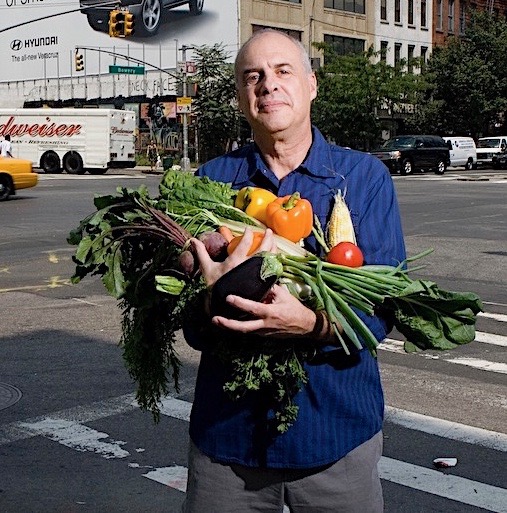
Sponsored
by
Banfi Vintners
EARLY AUTUMN WINES
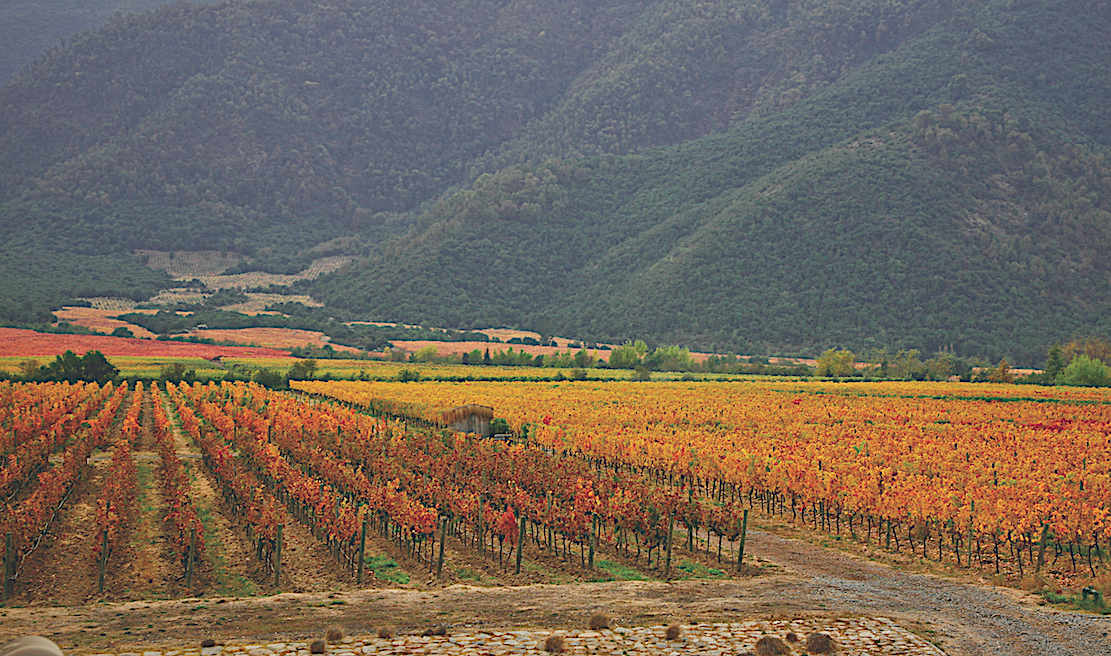
As
autumn kicks into low gear, we are reminded of the
fragility of Mother Earth and her
bounty. As an importer representing several
family wine makers from
around the globe, I often like to point out that all
the wines that we
represent are green, some of them greener than
others. The greenest of
all are classified as Biodynamic or certified
Organic. One of the most
interesting selections of eco-balanced, organic and
biodynamic wines comes to
us from Chile and the vineyards of Emiliana.
Emiliana was founded by our
friends, the Guilisasti family,
who have a long and proud history of winemaking with
their Concha y Toro
brand. Three decades ago, well ahead of the
curve that has made organic
wines all the rage today, they set up dedicated and,
most important for organic
 farming, isolated
vineyards for this type of agriculture. Many
may
picture the small farmer as being the most
“organic,” but in the reality of our
wine world, sometimes it takes the “big guys” to act
as a locomotive to get a
movement such as this on track.
Organic farming is a form of
agriculture which avoids or largely excludes the use
of synthetic fertilizers
and pesticides, plant growth regulators, and
livestock feed
additives.
farming, isolated
vineyards for this type of agriculture. Many
may
picture the small farmer as being the most
“organic,” but in the reality of our
wine world, sometimes it takes the “big guys” to act
as a locomotive to get a
movement such as this on track.
Organic farming is a form of
agriculture which avoids or largely excludes the use
of synthetic fertilizers
and pesticides, plant growth regulators, and
livestock feed
additives.
Organic farmers rely on crop rotation, crop
residues, animal manures--including
llamas (left)--and
mechanical
cultivation to maintain soils productivity and
health, to supply plant
nutrients, and to control weeds, insects and other
pests. To call a wine
organic in the US, government regulation says that
it must be produced from 95%
organically grown ingredients with no added
sulfites. If you add sulfites
in the relatively minimal amount of 100 parts per
million, you can only say
that the wine is “made from organically grown
grapes.” Now, not to go
into a chemistry lesson, but it is virtually
impossible to make a wine without
that modest dose of sulfites, at least if you want
to drink it beyond ten feet
of the cellar it was made in and wish it to survive
any moderate amount of
aging.
Biodynamic farming
adheres to the same principles,
but takes it one step further by relying on the
cycles of the moon and the sun
to dictate much of what is done in the field, and
uses animal treatments such
as compost teas, horns buried with fertilizer, deer
bladders, etc.,
to treat the soil. It may
sound a little hocus pocus, but in reality it is
very comparable to homeopathic
medicine, using the body’s (in this case, the
earth’s) own energy to heal
itself.
Emiliana has four
distinct collections of lovingly
crafted organic wine now available in the US – the
base line of Natura, the
next step up in Novas, a stand-alone wine in Coyam,
and the ne-plus-ultra of
bio-dynamic wines, Ge. One taste of any of
these and you too may find
yourself turning green – not with envy, but for a
newfound love of organic
winemaking!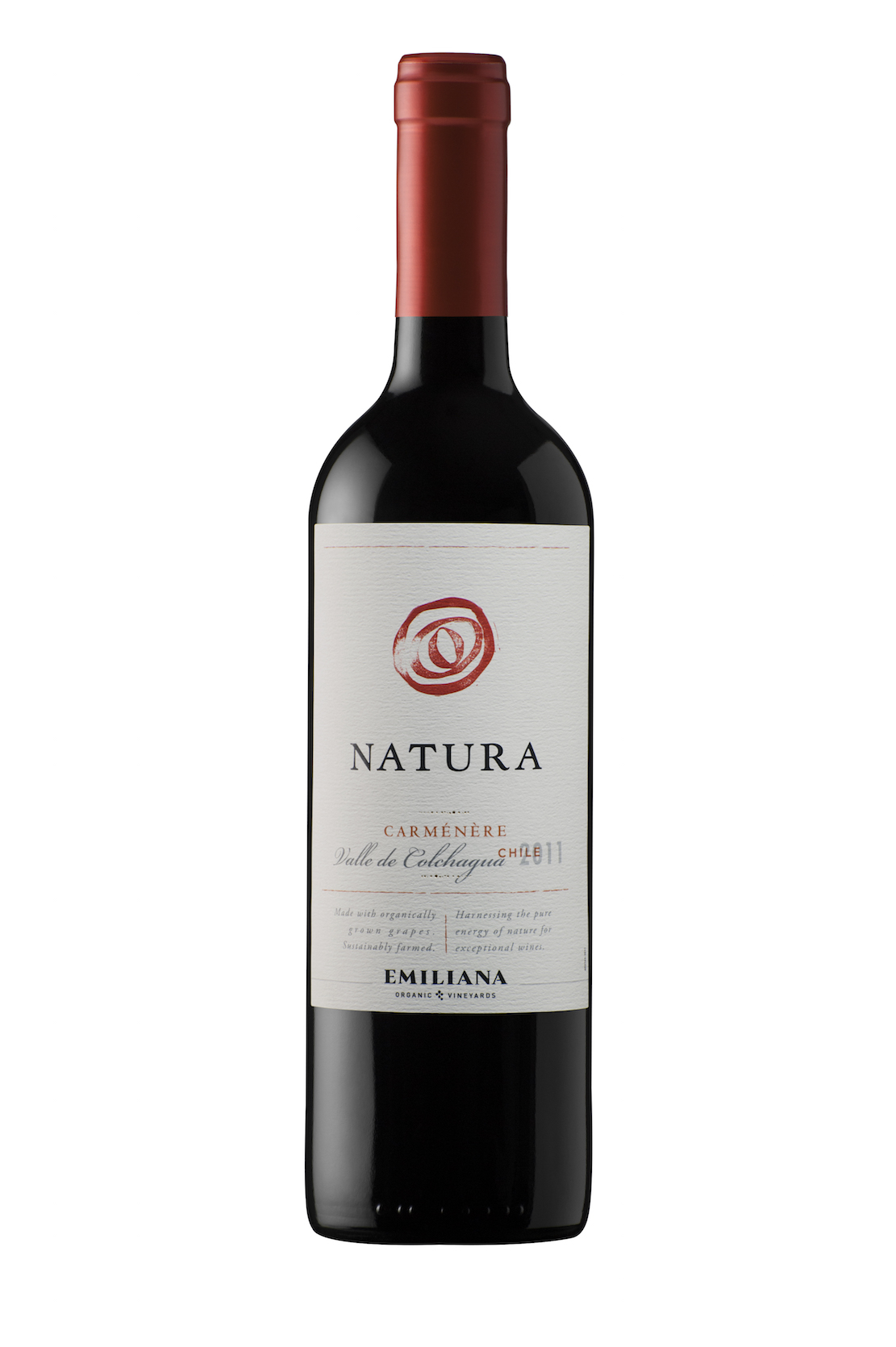
Natura Chardonnay In the
cool coastal Pacific climate of the Casablanca
Valley, organically grown grapes
are hand picked during the last week of March, and
vinified in stainless steel
tanks, free of the domineering influence of
oak. On the nose, tantalizing
citrus aromas of grapefruit and lime blend with
notes of pineapple, all of
which reappear on the palate and finish with balance
thanks to the wine’s freshness
and natural acidity. Delicious with spring
salads and seafood dishes.
Natura Carmenere – From
the rustic isolation of the Colchagua Valley, this
intense and voluptuous
offers aromas of cherries, chocolate and spice,
coming together in ramped up
volume on the palate with soft, round tannins and
firm, well-balanced
structure. Great balance between fruit and
oak, with a long, juicy
finish.
Novas Sauvignon Blanc
Gran Reserva – Hailing from the San
Antonio Valley’s thin rocky and clay
soils, the organic grapes for this wine are
harvested by hand in March and
undergo fermentation in stainless steel to preserve
their bright fruit
character. Herbal notes mixed with citrus and
soft floral hints fill the
bouquet; the taste is medium bodied with grapefruit
flavors joined by a
delicate acidity and a touch of minerality.
Novas Pinot Noir Gran
Reserva – The grapes for this
wine are grown in the cool, coastal
Casablanca Valley’s permeable sandy loam soils, and
harvested by hand.
After a cold soak on the skins, the wine is aged for
8 months in French oak
barrels to add character, depth and roundness.  Bright
ruby red in color with attractive aromas of berries,
strawberries and notes of
spice and cocoa, this wine bursts with fruit flavor,
layered with earthiness.
Delicious with white meats, light sauces, full
flavored fish and shellfish,
cured ham and sushi.
Bright
ruby red in color with attractive aromas of berries,
strawberries and notes of
spice and cocoa, this wine bursts with fruit flavor,
layered with earthiness.
Delicious with white meats, light sauces, full
flavored fish and shellfish,
cured ham and sushi.
Coyam – A blend dominated by Syrah with nearly equal parts of Carmenere and Merlot balanced by “soupcons” of Cabernet Sauvignon, Mourvedre and Petit Verdot, from the Colchagua Valley estate called Los Robles – Spanish for the oaks, called “Coyam” by the native Mapuche people in their own language. Hand harvested certified biodynamic grapes are naturally fermented in French oak barrels. Coyam is largely unfiltered and aged for 13 months in barrels. Aromas of ripe red and black fruits integrate with notes of spice, earth and a hint of vanilla bean. Elegant expressions of fruit are delicately interwoven with oak, mineral and toffee.
Ge – Chile’s
first certified biodynamic
wine, the name Ge is a nod to Geos, the earthly
environment pulling together
all the elements that surround us. Ge is a
blend of nearly equal parts of
Syrah, Carmenere and Cabernet Sauvignon grown in the
deep soils of colluvial
origin in the coastal range, which lends mineral
complexity. Naturally
fermented in oak barrels, Ge is deep plum red with
violet tones; it offers
intense aromas of black fruits and berries alongside
mineral notes and a soft
touch of tobacco leaf. Generously fruity with
cedar notes, Ge is well
balanced with tremendous volume, well rounded
tannins and a long finish.
For more
information please visit http://www.banfiwines.com/winery/emiliana/
Any of John Mariani's books below may be ordered from amazon.com.
 The
Hound in Heaven (21st Century Lion Books)
is a novella, and for anyone who loves dogs,
Christmas, romance, inspiration, even the supernatural, I
hope you'll find this to be a treasured favorite.
The story concerns how, after a New England teacher,
his wife and their two daughters adopt a stray puppy found
in their barn in northern Maine, their lives seem full of
promise. But when tragedy strikes, their wonderful dog
Lazarus and the spirit of Christmas are the only things
that may bring his master back from the edge of
despair.
The
Hound in Heaven (21st Century Lion Books)
is a novella, and for anyone who loves dogs,
Christmas, romance, inspiration, even the supernatural, I
hope you'll find this to be a treasured favorite.
The story concerns how, after a New England teacher,
his wife and their two daughters adopt a stray puppy found
in their barn in northern Maine, their lives seem full of
promise. But when tragedy strikes, their wonderful dog
Lazarus and the spirit of Christmas are the only things
that may bring his master back from the edge of
despair. WATCH THE VIDEO!
“What a huge surprise turn this story took! I was completely stunned! I truly enjoyed this book and its message.” – Actress Ali MacGraw
“He had me at Page One. The amount of heart, human insight, soul searching, and deft literary strength that John Mariani pours into this airtight novella is vertigo-inducing. Perhaps ‘wow’ would be the best comment.” – James Dalessandro, author of Bohemian Heart and 1906.
“John Mariani’s Hound in Heaven starts with a well-painted portrayal of an American family, along with the requisite dog. A surprise event flips the action of the novel and captures us for a voyage leading to a hopeful and heart-warming message. A page turning, one sitting read, it’s the perfect antidote for the winter and promotion of holiday celebration.” – Ann Pearlman, author of The Christmas Cookie Club and A Gift for my Sister.
“John Mariani’s concise, achingly beautiful novella pulls a literary rabbit out of a hat – a mash-up of the cosmic and the intimate, the tragic and the heart-warming – a Christmas tale for all ages, and all faiths. Read it to your children, read it to yourself… but read it. Early and often. Highly recommended.” – Jay Bonansinga, New York Times bestselling author of Pinkerton’s War, The Sinking of The Eastland, and The Walking Dead: The Road To Woodbury.
“Amazing things happen when you open your heart to an animal. The Hound in Heaven delivers a powerful story of healing that is forged in the spiritual relationship between a man and his best friend. The book brings a message of hope that can enrich our images of family, love, and loss.” – Dr. Barbara Royal, author of The Royal Treatment.
 |
The Encyclopedia of American Food and Drink by John F. Mariani (Bloomsbury USA, $35) Modesty forbids me to praise my own new book, but let me proudly say that it is an extensive revision of the 4th edition that appeared more than a decade ago, before locavores, molecular cuisine, modernist cuisine, the Food Network and so much more, now included. Word origins have been completely updated, as have per capita consumption and production stats. Most important, for the first time since publication in the 1980s, the book includes more than 100 biographies of Americans who have changed the way we cook, eat and drink -- from Fannie Farmer and Julia Child to Robert Mondavi and Thomas Keller. "This book is amazing! It has entries for everything from `abalone' to `zwieback,' plus more than 500 recipes for classic American dishes and drinks."--Devra First, The Boston Globe. "Much needed in any kitchen library."--Bon Appetit. |
"Eating Italian will never be the same after reading John Mariani's entertaining and savory gastronomical history of the cuisine of Italy and how it won over appetites worldwide. . . . This book is such a tasteful narrative that it will literally make you hungry for Italian food and arouse your appetite for gastronomical history."--Don Oldenburg, USA Today. "Italian
restaurants--some good, some glitzy--far
outnumber their French rivals. Many of
these establishments are zestfully described
in How Italian Food Conquered the World, an
entertaining and fact-filled chronicle by
food-and-wine correspondent John F.
Mariani."--Aram Bakshian Jr., Wall Street
Journal.
"Equal parts
history, sociology, gastronomy, and just
plain fun, How Italian Food Conquered the
World tells the captivating and delicious
story of the (let's face it) everybody's
favorite cuisine with clarity, verve and
more than one surprise."--Colman Andrews,
editorial director of The Daily
Meal.com. "A fantastic and fascinating
read, covering everything from the influence
of Venice's spice trade to the impact of
Italian immigrants in America and the
evolution of alta cucina. This book will
serve as a terrific resource to anyone
interested in the real story of Italian
food."--Mary Ann Esposito, host of PBS-TV's
Ciao
Italia. "John Mariani has written the
definitive history of how Italians won their
way into our hearts, minds, and
stomachs. It's a story of pleasure over
pomp and taste over technique."--Danny Meyer,
owner of NYC restaurants Union Square
Cafe, The Modern, and Maialino.
|
 |
 |
 |
 |
 |
 |
 |
 |
 Everett Potter's Travel Report:
Everett Potter's Travel Report: 
 Eating Las Vegas
JOHN CURTAS has been covering the Las Vegas
food and restaurant scene since 1995. He is
the co-author of EATING LAS VEGAS – The 50
Essential Restaurants (as well as
the author of the Eating Las Vegas web site: www.eatinglasvegas.
He can also be seen every Friday morning as
the “resident foodie” for Wake Up With the
Wagners on KSNV TV (NBC) Channel 3 in
Las Vegas.
Eating Las Vegas
JOHN CURTAS has been covering the Las Vegas
food and restaurant scene since 1995. He is
the co-author of EATING LAS VEGAS – The 50
Essential Restaurants (as well as
the author of the Eating Las Vegas web site: www.eatinglasvegas.
He can also be seen every Friday morning as
the “resident foodie” for Wake Up With the
Wagners on KSNV TV (NBC) Channel 3 in
Las Vegas.

MARIANI'S VIRTUAL GOURMET
NEWSLETTER is published weekly. Editor/Publisher: John
Mariani.
Editor: Walter Bagley. Contributing Writers: Christopher Mariani,
Robert Mariani, Misha Mariani, John A. Curtas, Geoff Kalish, Mort
Hochstein, and
Brian Freedman. Contributing Photographer: Galina
Dargery. Technical Advisor: Gerry McLoughlin.
To un-subscribe from this newsletter,click here.
© copyright John Mariani 2017

